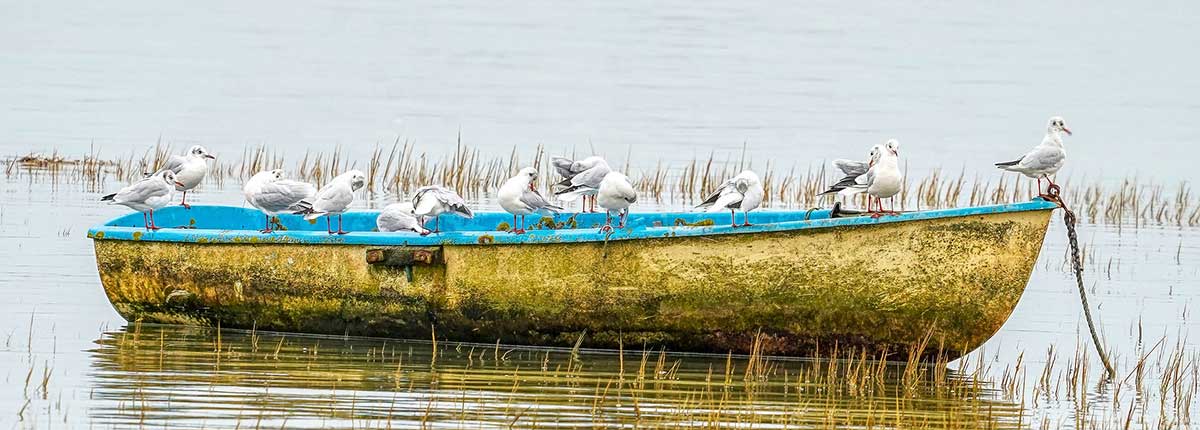Do Seagulls see Colour?
They do. In fact, most birds have the ability to see into the ultraviolet spectrum in addition to the range that we humans see. This gives them a very distinct perception of colour that helps them survive and thrive in the wild. This ability certainly influences how they perceive different colour objects in their vicinity. 
Seagulls, with their distinctive cries and graceful flight, are a common sight along coastlines and in urban areas around the world.
Understanding the behavior of these birds is crucial for effective animal control, especially in scenarios where their presence becomes problematic. By delving into the biology and behavior of seagulls, we can gain valuable insights into how to manage and prevent potential conflicts.
Understanding Seagull Behavior
Seagulls are not merely opportunistic scavengers; they are highly adaptable creatures shaped by a combination of biological and environmental factors. Their behavior is influenced by a variety of elements, from their innate biology to the landscapes they inhabit.
The Biology of Seagulls
Seagulls, scientifically known as gulls, come in various shapes and sizes, with common species boasting wingspans ranging from 30 to 60 inches.
Their coloration can vary from predominantly white to shades of gray, with some species featuring distinctive markings on their wings and heads. These physical characteristics enable seagulls to blend into a range of environments, from rocky cliffs to bustling cityscapes.
Anatomy and Physiology
Seagulls possess specialized anatomical features that contribute to their remarkable adaptability. Their streamlined bodies, powerful wings, and sharp beaks are finely tuned for a life spent soaring over open waters and scavenging along coastlines.
Additionally, seagulls have keen eyesight and excellent maneuverability, allowing them to spot potential food sources from great distances and execute precise aerial maneuvers to capture prey.
Feeding Habits
Seagulls are opportunistic feeders with a diverse diet that includes both natural prey and human-provided sustenance. From hunting small fish and crustaceans in coastal waters to scavenging for discarded food in urban environments, seagulls are adept at exploiting a wide range of food sources.
Their feeding habits are influenced by seasonal changes and environmental factors, with food availability playing a significant role in shaping their behavior.
Nesting Behavior
During the breeding season, seagulls exhibit complex nesting behaviors characterized by the selection of suitable nesting sites and the construction of elaborate nests. These nesting colonies can vary in size from a few pairs to thousands of individuals, depending on factors such as habitat availability and population density. Managing seagull nesting sites is essential for minimizing conflicts with humans and protecting sensitive ecosystems.
Understanding the behavior of seagulls is the first step towards implementing effective strategies for animal control. By exploring their biology, anatomy, feeding habits, and nesting behavior, we can develop targeted approaches to mitigate potential conflicts and foster harmonious coexistence between humans and seagulls.
Factors That Attract Seagulls
Understanding the factors that attract seagulls to specific areas is crucial for effective control and prevention measures. By identifying these attractants, we can develop targeted strategies to deter seagulls and minimize their presence in both natural and urban environments.
Environmental Influences
Seagull distribution and behavior are heavily influenced by natural environmental factors such as coastal habitats, water bodies, and weather patterns. Seasonal changes, migration patterns, and breeding cycles also play significant roles in shaping seagull populations. Additionally, environmental degradation and habitat loss can exacerbate seagull-related issues in certain regions, highlighting the importance of preserving and managing natural habitats.
Natural Habitats
Seagulls are commonly found in a variety of natural habitats, including coastal cliffs, sandy beaches, and rocky shorelines. In these environments, they play essential ecological roles and interact with other wildlife species. Preserving and managing natural habitats is crucial for balancing seagull populations and mitigating conflicts with humans.
Urban Environments
Urbanization has provided new opportunities for seagulls to exploit human resources and habitats, leading to increased urban gull populations. Common urban environments where seagulls thrive include waterfronts, harbors, parks, and landfill sites.
However, seagulls in urban areas can pose challenges such as property damage, noise pollution, and health risks, underscoring the need for effective management strategies.
Food Sources
Seagulls have a diverse range of natural food sources, including fish, crustaceans, mollusks, insects, and small mammals. They opportunistically forage for food in various habitats, including intertidal zones, estuaries, and agricultural fields.
Managing natural food sources is essential for reducing seagull attraction and minimizing conflicts with human activities.
Natural Prey
Common prey species targeted by seagulls in their natural habitats include small fish, shellfish, and marine invertebrates.
Seagull predation plays a vital role in maintaining ecological balance and regulating prey populations in marine and coastal ecosystems. However, it can also have significant impacts on vulnerable or economically important prey species, such as commercial fisheries.
Human Food Waste
Human activities such as fishing, agriculture, and tourism contribute to the availability of food waste that attracts seagulls. Scavenging on human food waste poses risks such as disease transmission, pollution, and nuisance behavior. Minimizing the attraction of seagulls to human food waste requires proper waste management practices, public education, and targeted deterrents.
Do Seagulls prefer one or more Colours?
Seagulls, like many birds, are attracted to the colours of food or colours that can enhance their social interaction. Birds, in general, are drawn to brighter and more vibrant colours. Red, orange and yellow are seen as attractive, but even more dull colours can attract Seagulls because the birds can see the brighter more vibrant ultraviolet colour that we cannot. Much like we may instinctively associate certain colours with familiar objects, seagulls and other birds may recognize vibrant colours as food; flowers, seeds, or fruits that birds forage for in the wild.
Imagine seeing a vibrant red fruit growing on a tree in the wild and the tree is covered in birds. The red fruit will get their attention, but it also glows brightly on the ultraviolet wavelength. The bird eats the fruit, then poops it out a few hours later, and it lands on the ground where the seeds root to grow more fruit trees. It’s Mother Nature's way of propagating many different species of plants.
Are Seagulls attracted to the Colour Red?
Hawkeye Bird & Animal Control did a job a few years back with a huge seagull problem on the roof of a large manufacturing plant not far from Lake Ontario. There were so many seagulls, the roof was starting to rot in places from all the acidic seagull droppings and the feathers getting into the HVAC system on the roof caused a whole different issue. Many of the gulls were light pink in colour. Scouting around the area we found a candy manufacturing plant nearby and heaps of trash that was full of red candy. The colour red was readily seen from the air as there was so much of it. Apparently, this was a popular daily feeding spot for the resident seagulls.
Are Seagulls attracted to the Colour Blue?
Blue is also a very popular colour for birds as it is the colour of water and the sky, which is the natural habitat for so many birds. This includes seagulls, who often inhabit coastal areas and are around water - lakes, rivers, and even ponds. The blue also stands out against the natural background of trees, forests, fields, and rocks, making it easy to see from great distances.
What else attracts Seagulls?
Seagulls are also attracted to other seagulls. There are more than 50 different species of “gulls” world wide and 23 species in Canada. Herring gulls and ring billed gulls are the most common on the Great Lakes. Gulls are very social birds and almost always nest together, live together, fly, and hunt together. It isn’t unusual to see herring and ring billed gulls nesting and laying eggs in very close proximity. Seagulls seem to be attracted to the shades of colour that reflect their own natural colouring. Typically, gulls tend to be white or off white, with shades of light to medium grey on their wings and belly, black and/or yellow on their beaks or legs, depending on the species of gull.
Is White a 'Danger' Colour for Birds?
To most bird species, the colour white represents potential danger because they will stand out and be highly visible against a white background. Of course, seagulls are predominately white or offf-white and would not have that worry. The colour White seems to have no negative effect on Seagulls.














